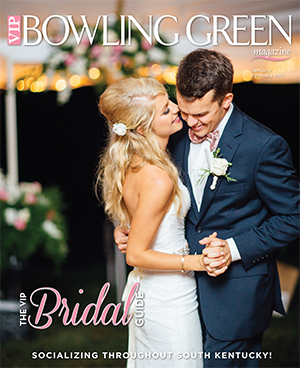The Art of Living: Stylish Sheds & Elegant Hideaways
/Big Ideas for Small Backyard Destinations
Story by Lyda Kay Ferree, The Southern Lifestyles Lady. Photography courtesy of William Wright.
The expansive blue skies of eastern Washington State offer brilliant contrast to the natural cedar-clad greenhouse in a hedge-enclosed vegetable, herb, and cutting garden.
Debra Prinzing is a regular contributor to the “Los Angeles Times,” “Cottage Living,” “Better Homes & Gardens,” “Fine Gardening,” “Sunset” and other magazines. She lectures frequently on garden and design topics. She lives in Los Angeles.
Today’s shed is not your grandfather’s tool house. Rather, it is a canvas for a fabulous space, and it may serve as a yoga studio, guesthouse, playroom, writing nook, entertaining enclave, or any other kind of hideaway space you can think of. Sheds are, in fact, a great way to add a room to your house without undergoing a big renovation.
Some sheds are elaborate, luxurious spaces; others are simple and beautifully modest. All, however, have the potential to be stylish and elegant. In “Stylish Sheds and Elegant Hideaways: Big Ideas for Small Backyard Destinations” (Clarkson Potter/Publishers) Debra Prinzing showcases twenty-eight innovative and beautifully imagined spaces from New York City to East Hampton, from Seattle to San Diego, and from Atlanta to Austin to Santa Cruz.
“Stylish Sheds and Elegant Hideaways” guides the reader in imagining why, how, and where you can establish a private getaway to satisfy your desires. Key considerations to include:
• Placement: Design a shed as the central architectural element of your garden or tuck it away from plain view, making it a private enclave.
• Size and Scale: Check local codes to determine the maximum size allowed without a permit (usually around 100 square feet). Make sure the shed’s look and proportions complement your home’s architecture.
• Preparation: Fabricate a “foundation” such as a poured concrete pad, porch footings that support a floor or pavers set in sand.
• Design: Select a roof style, doors and windows that give the shed its personality.
• Decorate: Furnish the interiors to reflect your color and textile preferences; fill the shed with personal collections and artwork.
• Experience: Vow to spend time here as often as possible—on your own or in the company of those dear to you.
“This tower is my attempt to give a viewpoint to the knot garden and to catch glimpses of the sailboats on the lake beyond our property,” says the homeowner.
With invaluable advice on the practicality of designing a unique shed-retreat and thoughts from backyard philosophers who celebrate the appeal and possibilities of simple structures, “Stylish Sheds and Elegant Hideaways” is both an inspiration for creating your own backyard destination and an armchair journey to some of the country’s most private and serene places.
Be it ever so humble or fabulous, there’s nothing like a potting shed of one’s own. Gardeners yearn for a space in the yard that can put the fun into functional. Some potting sheds are simple charmers filled with cute collections and themed accoutrements that represent a gardener’s passions. Others are workhorses for actually potting plants and storing tools—but with stylish flair. Any simple shed may be augmented with some elements that transform it in a destination.
In her book “Stylish Sheds and Elegant Hideaways” Debra Prinzing defines potting sheds this way: “Today’s shed is a small structure designed and built for one’s personal enjoyment.” Even a prefab shed purchased from a home improvement store can become a personalized space, embellished with custom touches in which to dream, putter, work, and retreat, but most of all, enjoy.
There are a variety of sheds: a cute Country Henhouse Shed, complete with screened porch; a tiny down-to-earth Craftsman Cupola Shed; a Shipping Container Shed; a Cottage Shed with shelves for garden- related collections like packets of seeds and if the ceiling is tall enough, display your garden art or baskets, tools, and other utensils; a Rustic Stone Shed; and a formal Carriage Shed.
A Stylish Shed—All Your Own
Design tips for creating the backyard shed of your dreams
Working with Seattle photographer William Wright to create “Stylish Sheds and Elegant Hideaways,” Debra Prinzing visited nearly 100 sheds occupying city gardens, suburban backyards, and quiet country fields. There are infinite design ideas to explore, depending upon your space and ambition. Below are five of Debra’s top design tips:
Check local building codes for zoning guidelines.
Identify the activities that draw you outdoors.
Consider the shed’s architectural role in the landscape.
Choose its placement in the landscape.
Think carefully about the interiors.
In the end your shed should be designed for your private and personal delight. It is the place where you will feel safe, free to create and contemplate, and take refuge from the everyday demands of life.
“It isn’t your home, but it’s home to your lifestyle.”
VIP: Is there a resurgence of interest in sheds and hideaways? If so, why?
Debra Prinzing: Lots of older properties traditionally had an outbuilding or functional structure for storage or agriculture or gardening use. These were probably the original inspiration for potting or gardening sheds. When I wrote this book 12 years ago in 2008 I was the first person to write about this phenomenon. Then real estate took a hit, and people were just trying to save their house. They were not interested in trying to save their back yard.
My photographer, William Wright, and I were incredibly ahead of our time. Now there is a resurgence of interest in sheds. I don’t think they have ever gone out of fashion. When I spoke at the San Francisco Garden Show I asked guests at the lecture to jot down their dream shed and for what would they use the shed. People wrote the most fascinating things. They sketched images of their inner thoughts. Would they drink tea in the shed and read a tea catalog or would they paint in it or create a meditation space—all purposes beyond a potting shed. That’s what I think is still happening in a shed.
VIP: Do you have a shed or hideaway at your home? If so, what style is it?
DP: Now I live in a suburb. My backyard is about 20 feet deep and 60 feet wide so it’s a long rectangle. I added a greenhouse that looks like a mid-century modern structure with a slant roof. It is made of cedar. I putter around in it, winter over my plants and start my seeds. I am surrounded by plants, and I look out over my cutting garden. It’s a daily joy plus it is a focal point outside my kitchen window. Building a shed or placing a shed so that it is visible from inside a home is a wonderful idea. I’ve had other sheds in the past, but this one can be taken with me if I move. It’s only 8x8 feet inside.
VIP: What are some of the many usages of a shed or hideaway?
DP: I believe that structures exist to house or contain our passions. One of the most outrageous ones had a retractable roof so the male owner, an amateur astronomer, could stargaze at night. His stargazing lens could pop up through the ceiling. A lot of people use a color palette that they may not ever use inside their home. Some people use a shed’s interior for functions or completely convert to impromptu alfresco dining. A couple in Austin, Texas had a stone house made of native Texas stone from the Hill Country and it had a tin roof on it. They had lots of cocktail or mimosa brunches in there because the shed was whimsical. That’s where people wanted to go. They all ended up in the shed.
Shed owners may have one original intent, but they quickly realize how versatile sheds are for other activities. One gentleman had an architectural salvage potting shed with Gothic church windows, and he used his tiny shed for weddings. A lot of sheds are in warmer areas so they may be used as year round guest houses, and others are more like a summer house.
A trio of double-hung windows creates a glass wall offering an award-winning writer a constant perspective of nature outside. The 14-foot-long pine bench has storage cabinets and serves as an ideal work surface for organizing research or student manuscripts.
VIP: What are some styles of sheds?
DP: There are a variety of styles including Craftsman style, elegant, rustic, henhouse shed, shipping container shed (unusual), cottage shed, stone shed and formal carriage shed. I have seen lots of structures or sheds that resemble the primary residence. On the extreme side, some were truly follies because they had nothing to do with the primary residence. They reflected the owner’s whimsies or architectural fetishes. One woman turned her metal utility shed into a picture of the Doges Palace in Venice. She wanted it to be elevated so she could have a viewing tower on a platform and a railing (for safety reasons) where she and her guests could have tea or cocktails overlooking the garden.
VIP: What are the steps a homeowner should take in creating a shed?
DP: In addition to dreaming of the shed you would like to have, check your local building codes to find out zoning guidelines. There is usually a maximum size one can build without a permit. Typically it is about 200 square feet or 10x20. If you add utilities or water you will probably need a permit for that. Then start looking at activities you want to happen inside the shed. Sometimes there are property line restrictions. Consider the shed’s architectural role in the landscape. I love structures that can be a vertical element in the garden. Placement is quite important. My greenhouse is a focal point outside my kitchen window, but it blocks a view of a boring property that is overgrown so they can screen things out as well.
VIP: What are some of the challenges a homeowner may encounter in creating a shed or converting an existing hideaway? I am confident that my original potting shed was created for the original owner of my 100-year-old house, who loved flowers and gardening.
DP: It is like any home improvement project. Make sure it is level and there’s a stable foundation. It should be completely weatherproof. The biggest issue is siting. Not everyone has a level lot. Some structures are built on platforms or on a hillside. Keep it clean and water-free and free of pests like spiders.
VIP: How may a homeowner make a hideaway or shed more inviting?
DP: I love ornamentation of any kind. People do really interesting things like install large mirrors inside the back wall so that light is reflected inside the space and it’s not as dark. Hang chandeliers, add a weather vane and/or display your collection. It isn’t your home, but it’s home to your lifestyle.
• Consider how you would like to use the interior space. Will it merely store your tools? Will it be extra living space? Do you want a cute playhouse or a room to display a collection?
• Paint is the easiest, most inexpensive way to make a change. Paint the storage shed in the same shades as your house—including contrasting trim—or paint it to accentuate a difference.
• Add elements such as windows, lighting, a deck, an awning, or a pergola to make the shed appear more like a miniature residence.
• Build a path to the shed, making it seem like a destination instead of an afterthought.
• Create a makeshift portico with architectural salvage.
• Welcoming Touches such as a doormat, containers of potted plants, seating, a doorknocker, a wreath, or other decor can instantly give a blah shed a friendly aspect. Incorporating plantings around the shed help integrate it with the rest of your garden.
A neglected garage gets a face-lift as a useful office. A stucco paprika-colored studio is cooled by a crisp white trim on cottage-style windows and doors. Retro seating upholstered in lime and orange outdoor fabric echoes the citrus palette inside.
Debra Prinzing is a regular contributor to the “Los Angeles Times,” “Cottage Living,” “Better Homes and Gardens,” “Fine Gardening,” “Sunset,” and other magazines. She lectures frequently on garden and design topics. She lives in Los Angeles.
Prinzing’s “Stylish Sheds and Elegant Hideaways” book may be ordered online (Amazon) or inquire at your local library.
For more information visit www.debraprinzing.com





















































